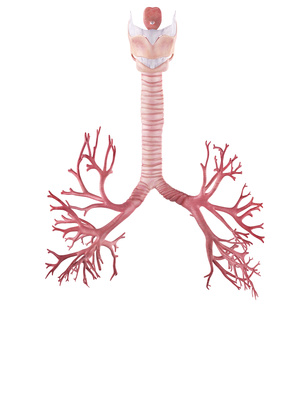2020/10/06

Tracheomalacia is a rare congenital abnormality of the tracheobronchial cartilage causing the collapse of the airway and obstruction of expiratory flow. It is very difficult to manage infants with severe tracheomalacia. Severe cases lead to worse respiratory conditions and may become life-threatening, and necessitate immediate surgical treatment. Takeshi Yano of the University of Miyazaki, Japan has published an article in the Annals of Case Reports and Images Journal, in which a method to manage severe tracheomalacia patients using muscle relaxant has been discussed.
Coughing and crying that increase the respiratory efforts of the child will aggravate the symptoms of tracheomalacia by an abnormal increase in extraluminal pressure, leading to the collapse of the trachea. The patients, particularly those who are waiting for surgical procedures, need immediate medical treatments to prevent a fatal attack.
The author and his medical team had earlier reported two cases in which the life-threatening hypoxemia due to tracheomalacia was successfully managed by the continuous administration of rocuronium, a muscle relaxant. Subsequently, several similar cases and clinical experiences convinced them regarding the efficacy of rocuronium as an effective drug for the treatment of patients with severe tracheomalacia.
Rocuronium has been widely used as a non-depolarizing muscle relaxant in clinical anesthesia to produce ideal surgical conditions. It has also been used in patients with normal airway anatomies for the paralysis of respiratory and airway muscle groups.
Even though the dosage of rocuronium varies for different cases, and from patient to patient, the experiences of the author have shown that in most cases 7 μg/kg/min of rocuronium is required for the safe management of life-threatening attacks due to tracheomalacia. A much higher dosage of rocuronium may be required for complete prevention of hypoxic events in some cases.
It has also been reported that rocuronium has a tendency to release histamine and that the bronchoconstriction related to rocuronium administration has impact on better prevention of hypoxic episodes in tracheomalacia.
Rocuronium improves facemask ventilation by eliminating airway reflexes and reducing the tone of muscles. Nevertheless, it has the possibility to deteriorate the respiratory status of patients with airway obstructions. Hence, necessary caution must be taken while using muscle relaxants in patients with airway obstructions, especially when it is not due to tracheomalacia but a mechanical obstruction.
Moreover, for ventilator-associated pneumonia and intensive care-acquired weakness, the continuous use of muscle relaxants will become a risk factor. It is necessary to monitor the neuromuscular function quantitatively in order to eliminate the risk of unnecessary paralysis in children.
Based on the clinical experiences, the author has convinced the efficacy of rocuronium for treatment of tracheomalacia and suggests that the continuous administration of 7 μg/kg/min of rocuronium is required for the safe management of life-threatening attacks due to tracheomalacia. Nevertheless, the number of cases of severe tracheomalacia is insufficient, which makes it difficult to evaluate the effectiveness of the administration of muscle relaxants for the treatment of tracheomalacia. Hence, it is necessary to conduct more research and case studies that will provide strong evidence-based support for the continuous administration of muscle relaxants on tracheomalacia patients.
Takeshi Yano. Continuous Muscle Relaxant Administration for the Management of Severe Tracheomalacia. Annals of Case Reports and Images 2018;1(2):1. [View Article]